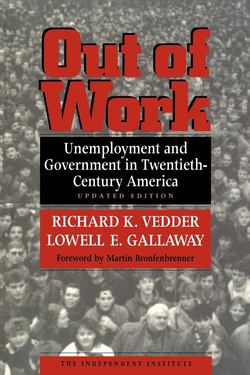Читать книгу Out of Work - Richard K Vedder - Страница 20
На сайте Литреса книга снята с продажи.
2
Unemployment in Theory
ОглавлениеWith the increased interest in unemployment came intense scholarly investigation into its causes. Whereas in the nineteenth century economists were concerned about the gains from trade, the determination of prices and quantities, and optimal production levels for firms in alternative market structures, over much of the twentieth century the dominant single interest in economics was the question of the determinants of unemployment. Indeed, a whole new branch of economics, “macroeconomics,” developed.
Economists since John Maynard Keynes (who died in 1946) generally accept Keynes’s interpretation of what he termed the “classical” economists’ position on unemployment.1 Actually, the use of the term “classical” is somewhat inappropriate, since the “classical” economists are generally considered to have written in the period from 1776 to about 1850 or 1860. A postclassical school, developing “neoclassical economics,” began around 1870, dominated economic thinking to about 1930, and remains important today; and the unemployment theory that Keynes attacked was essentially a neoclassical theory. Roughly simultaneously with the neoclassical developments, a second school of economists, the Austrians, was developing on the European continent. While the Austrian position on business cycles differed from neoclassical thinking, the Austrians reached many similar conclusions with respect to unemployment determination. Thus we can talk of a “neoclassical-Austrian” perspective on unemployment.
